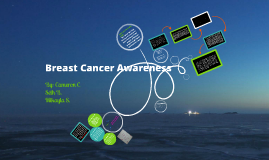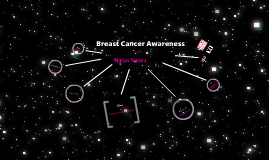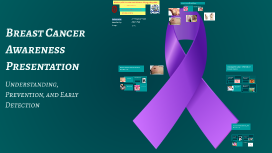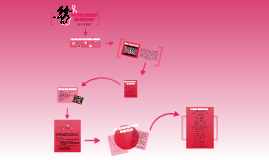Breast Cancer Awareness Presentation
Transcript: Ministry of Education And Science of kyrgyz Republic Introduction to Breast Cancer OSH STATE UNIVERSITY Importance of Awareness What is Breast Cancer? Awareness of breast cancer significantly enhances early detection and treatment outcomes. Regular screenings and education on self-examinations can empower individuals to recognize changes in their bodies and seek medical advice promptly. International Medical Faculty Breast cancer arises when cells in the breast grow uncontrollably, forming a tumor that can be invasive if not detected early. It primarily affects women, but men can also develop it, highlighting the importance of awareness for all genders. BREAST CANCER A. Mitalipova Maam Submitted to: Aman singh Submitted by : Group : 9/24 Breast Cancer Awareness Presentation Recognizing Signs & Symptoms of Breast Cancer Understanding Breast Cancer Risk Factors Lump in Breast or Armpit Family History Nipple Discharge or Inversion Age & Genetics Age is a significant risk factor for breast cancer, as the incidence increases with age. Genetic mutations, particularly in BRCA1 and BRCA2 genes, greatly elevate the risk, making individuals with a family history of breast cancer particularly vulnerable. Having relatives, especially first-degree relatives like mothers or sisters, with breast cancer raises an individual's risk. Family history contributes to both genetic predisposition and shared lifestyle factors that can influence breast cancer development. A lump in the breast or armpit is often the first noticeable symptom of breast cancer. This lump may feel different from the surrounding tissue, and early examination can lead to timely intervention. Unusual nipple discharge, especially if bloody, and changes such as nipple inversion may indicate underlying issues. These symptoms can signify breast cancer and warrant immediate consultation. Skin Dimpling or Redness Hormonal Factors Lifestyle Choices Changes in Breast Shape or Size Hormonal factors, such as prolonged exposure to estrogen, increase breast cancer risk significantly. Conditions that elevate estrogen levels, such as early menstruation or late menopause, contribute to this risk. Certain lifestyle choices significantly impact breast cancer risk. Factors like smoking, excessive alcohol consumption, and obesity are linked to increased risk. Maintaining a healthy lifestyle can help mitigate these risks effectively. Changes in breast shape or size can occur with breast cancer development. Unexplained swelling or changes, particularly if only on one side, should prompt further medical evaluation. Skin dimpling or persistent redness on the breast surface may suggest inflammatory breast cancer. These symptoms should be evaluated by a healthcare provider as they can indicate serious conditions. Understanding, Prevention, and Early Detection Diagnosis, Treatment, and Prevention Treatment Options Diagnosis Methods Diagnosis of breast cancer typically involves mammograms, ultrasounds, and biopsies. Mammograms can detect tumors before they become palpable, while ultrasounds provide further insights into the nature of the findings. Biopsies confirm the presence and type of cancer, allowing for tailored treatment plans. Treatment for breast cancer varies based on the cancer type and stage. Surgical options include lumpectomy or mastectomy, often combined with chemotherapy, radiation therapy, or hormone therapy. Personalized treatment plans enhance effectiveness, improving survival rates significantly. Importance of Regular Screenings Prevention Strategies Regular screenings are vital, especially for women over 40 or those at high risk. Early detection through consistent mammograms can lead to successful treatment outcomes. Awareness of personal risk factors and familial history increases the likelihood of early diagnosis, saving lives. Preventative strategies against breast cancer include maintaining a healthy diet, regular exercise, and avoiding smoking. Performing regular self-exams and being proactive about lifestyle choices can significantly lower risk factors associated with the disease.

















